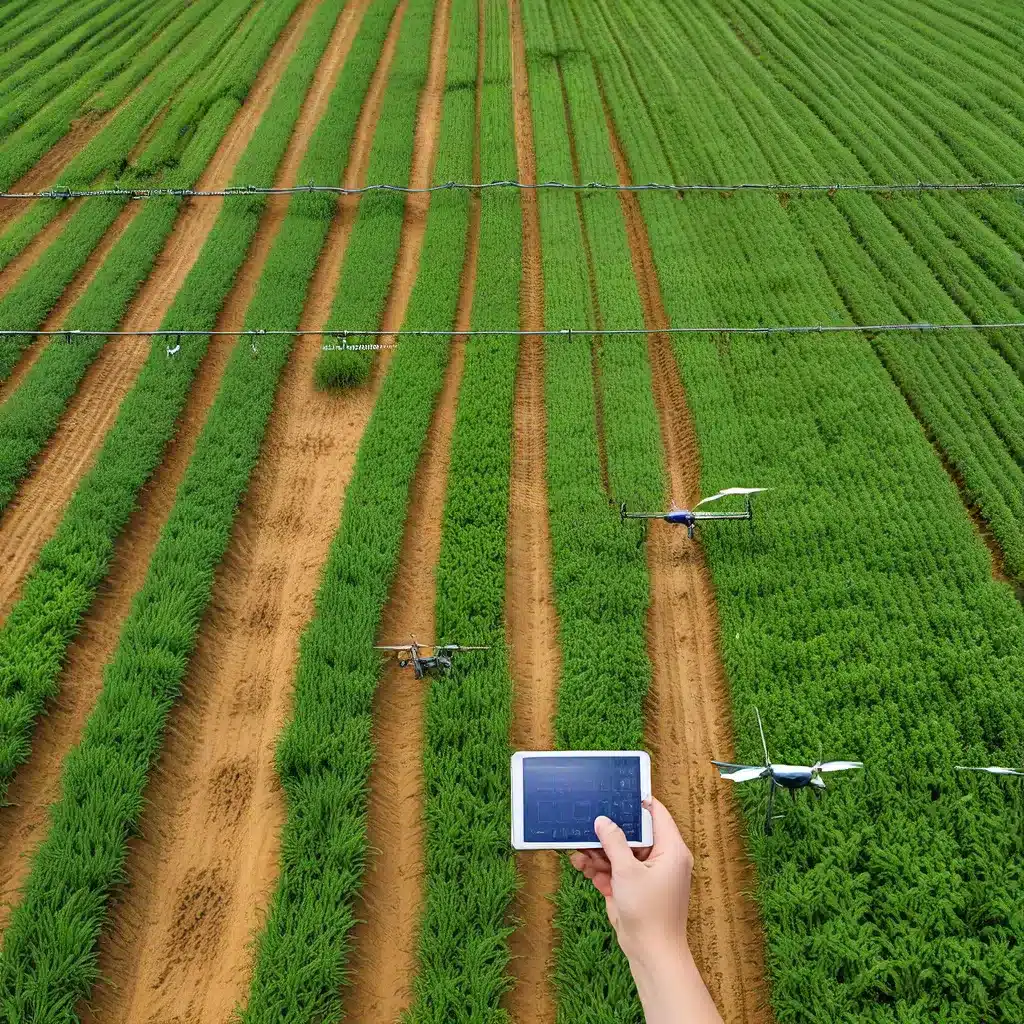
Revolutionizing Farming with Interconnected Sensor Systems
The agricultural industry is undergoing a transformative shift, fueled by the rapid advancements in sensor networks and Internet of Things (IoT) technologies. Precision agriculture, a data-driven approach to farming, is emerging as a game-changer, empowering growers to optimize resource utilization, increase yields, and promote sustainable practices. At the heart of this revolution lies the strategic deployment of scalable sensor networks, which are enabling real-time monitoring, data-driven decision-making, and enhanced crop management.
Sensor networks have become the backbone of precision agriculture, providing growers with a comprehensive view of their operations. From soil moisture and pH levels to environmental conditions and plant health, these interconnected systems gather a wealth of data, painting a detailed picture of the farm’s ecosystem. By leveraging advanced analytics and machine learning algorithms, growers can gain invaluable insights, allowing them to make informed decisions that optimize irrigation, fertilization, and pest control strategies.
Overcoming Challenges in Sensor Network Design
Designing an effective sensor network for precision agriculture, however, is not without its challenges. Scalability, energy efficiency, and security are critical factors that must be carefully addressed to ensure the long-term viability and reliability of these systems.
Scalability: As farms continue to grow in size and complexity, the sensor network must be able to seamlessly scale to accommodate the increasing number of nodes and the vast volumes of data they generate. Mesh networking and hierarchical architectures have emerged as popular solutions, enabling the network to expand and adapt to the changing needs of the farm.
Energy Efficiency: Sensor nodes in agricultural settings are often deployed in remote and hard-to-reach areas, making frequent battery replacement or recharging a logistical nightmare. Energy-harvesting technologies, such as solar panels and thermoelectric generators, have become essential in ensuring the longevity and reliability of these sensor networks.
Security: With the rise of cyber threats and the potential for malicious actors to disrupt critical farming operations, the security of sensor networks has become a paramount concern. Robust encryption protocols, access controls, and anomaly detection mechanisms are crucial in safeguarding the integrity of the data and the overall system.
Optimizing Resource Utilization and Crop Yield
By addressing these design challenges, sensor networks are revolutionizing precision agriculture, enabling growers to optimize resource utilization and boost crop yields. Soil moisture sensors, for example, can precisely monitor the water needs of individual plots, allowing for targeted irrigation and minimizing water waste. Environmental sensors, on the other hand, can track temperature, humidity, and light levels, enabling growers to fine-tune their greenhouse or field management strategies for maximum productivity.
Moreover, plant health sensors can detect the early onset of diseases or pests, triggering targeted interventions and reducing the need for broad-spectrum pesticide application. This not only increases yields but also promotes environmental sustainability by minimizing the ecological impact of agricultural practices.
Driving Sustainability and Profitability in the Future of Farming
As the agricultural industry continues to face mounting challenges, such as climate change, population growth, and resource scarcity, the role of sensor networks in precision agriculture becomes increasingly vital. By optimizing resource utilization, reducing waste, and enhancing crop yields, these interconnected systems are poised to play a transformative role in ensuring food security and promoting sustainable farming practices.
Furthermore, the integration of sensor networks with advanced analytics and decision support systems opens up new avenues for data-driven farming. Growers can leverage these technologies to make more informed decisions, mitigate risks, and respond to changing environmental and market conditions, ultimately boosting profitability and operational resilience.
In conclusion, the scalable sensor networks for precision agriculture represent a pivotal shift in the way we approach farming. By harnessing the power of interconnected, data-driven systems, growers can unlock new levels of efficiency, productivity, and sustainability, paving the way for a future where technology and agriculture work in harmony to feed the world.
Exploring the Future Frontiers of Sensor Networks in Agriculture
As the sensor network landscape continues to evolve, researchers and industry leaders are exploring innovative applications that push the boundaries of what is possible in precision agriculture. Drone-based sensor networks, for instance, can provide a bird’s-eye view of crop health and environmental conditions, enabling more targeted and efficient interventions.
Emerging technologies, such as 5G communication and edge computing, are also transforming the way sensor networks operate. Faster data transmission and distributed processing capabilities can enable real-time decision-making and swift response times, further enhancing the effectiveness of precision agriculture.
Moreover, the integration of artificial intelligence (AI) and machine learning with sensor networks is unlocking new frontiers. Predictive analytics can help growers anticipate and address issues before they arise, while autonomous decision-making systems can automate various farming tasks, reducing the burden on human operators.
As the agricultural industry continues to grapple with the realities of a changing climate, growing population, and resource scarcity, the importance of scalable sensor networks for precision agriculture cannot be overstated. By harnessing the power of interconnected, data-driven systems, growers can unlock new levels of efficiency, productivity, and sustainability, paving the way for a future where technology and agriculture work in harmony to feed the world.
Conclusion: Embracing the Sensor-Driven Future of Farming
The rise of scalable sensor networks in precision agriculture represents a transformative shift in the way we approach farming. By leveraging the power of interconnected, data-driven systems, growers can optimize resource utilization, boost crop yields, and promote sustainable practices – all while enhancing profitability and ensuring food security.
As the agricultural industry continues to face mounting challenges, the role of sensor networks will only grow more vital. From energy-efficient designs and robust security protocols to advanced analytics and autonomous decision-making, these interconnected systems are poised to play a pivotal role in shaping the future of farming.
By embracing the sensor-driven revolution in precision agriculture, growers can unlock new levels of efficiency, productivity, and sustainability, ultimately contributing to a more resilient and prosperous agricultural landscape. The future of farming is here, and it is powered by the transformative potential of scalable sensor networks.